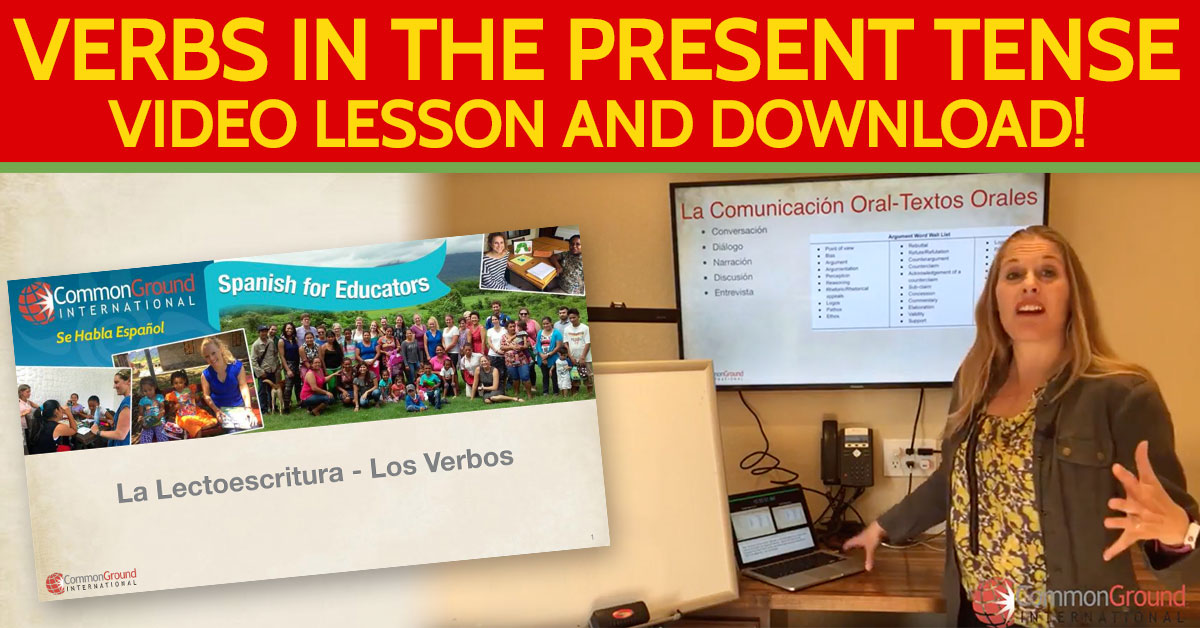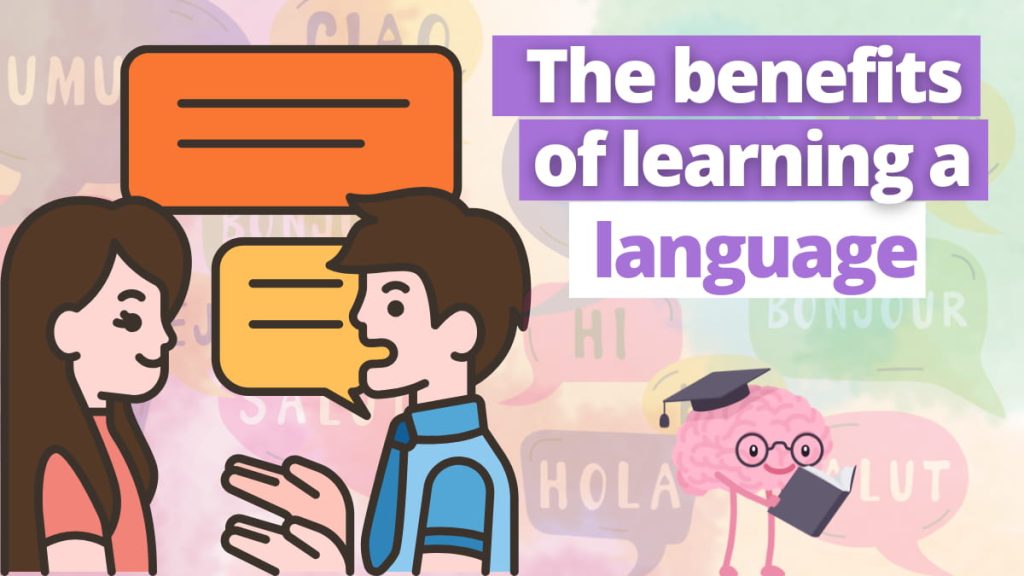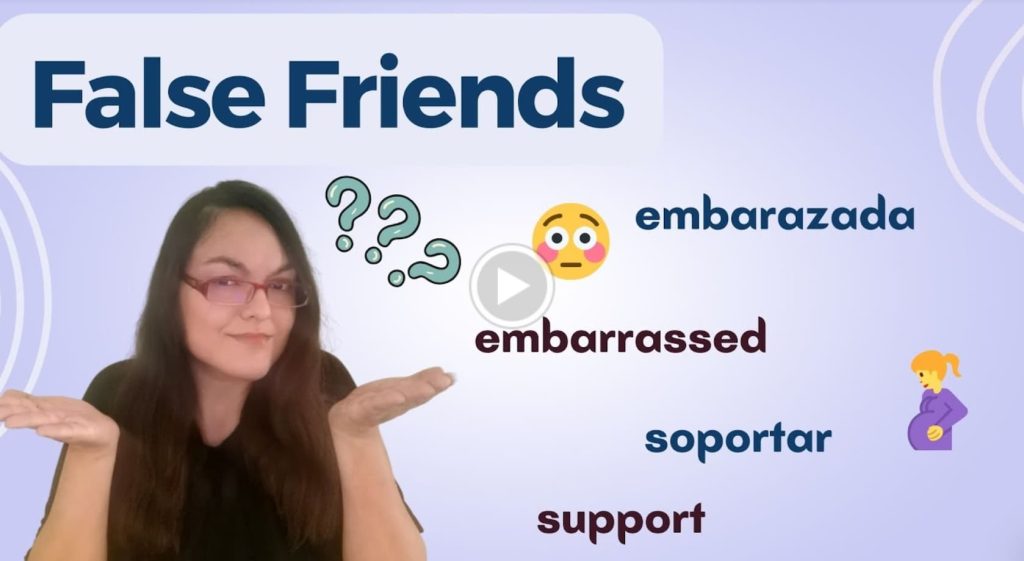This Spanish for Educators lesson focuses on learning present tense verbs in Spanish in the context of teaching your students about literacy: los verbos dentro del contexto de Lectoescritura.
Su reto profesional: Start using verbs in the present tense in Spanish in your classroom! No le tema a los verbos en español!
Here is the Spanish lesson all about Verbs in The Present Tense – I taught to my Maestro Miércoles Facebook group:
La Comunicación Oral / Oral communication
Think of all the ways we learn to communicate – especially in school! Communication takes various forms and styles: formal, informal, presentational, debate, interview, etc. If you are a literacy teacher, what are all the different ways you teach your students to communicate in English or Spanish? Here are some examples…
- Conversación: students learn how to converse
- Diálogo: how to read and write dialogues
- Narración: how to be the narrator of a short story
- Discusión: how to discuss about a topic
- Entrevista: how to make an interview
- Exposición: how to make a great presentation
- Presentación: how to introduce themselves
- Argumentación: how to defend a view or value
As I was preparing this lesson, I realized that no matter what type of communication you are learning and/or teaching there are many common verbs that cross various modes of communication. And it is súper importante for you to learn how to conjugate these verbs. Por ejemplo:
STEP 1: Let’s start with a quick question for you…
What are the top 10 common verbs you use as you are teaching in your classroom. Quick write them down and if you don’t know what they are in Spanish, you can look them up here
STEP 2: 3 Clasificaciones de verbos / 3 Verb Classifications
In Spanish, you will find verbs with three types of endings: -AR, -ER, and -IR. And you will start noticing a conjugation pattern for regular verbs depending on whether they end in -AR, -ER and -IR. Here you can see some examples of some of these verbs and their meaning in English:
-AR Verbs
| Spanish | English |
|---|---|
| Hablar | To talk |
| Determinar | To determine |
| Identificar | To identify |
| Analizar | To analize |
| Imaginar | To imagine |
| Dar | To give |
-ER Verbs
| Spanish | English |
|---|---|
| Leer | To read |
| Hacer | To do / make |
| Ver | To see / watch |
| Poder | Can / Could / Be able to |
| Tener | To have |
-IR Verbs
In this section, you can see how to conjugate regular (versus irregular) verbs in the present tense in Spanish correctly. Notice they follow a pattern depending on the ending of the verb:STEP 3: Las conjugaciones
Los verbos de AR / AR verbs
Estudiar
- Yo = o (Estudio)
- Tú = as (Estudias)
- Él, Ella, Usted = a (Estudia)
- Nosotros/as = amos (Estudiamos)
- Vosotros/as = ais (Estudiáis)
- Ellos, Ellas, Ustedes = an (Estudian)
Los verbos de ER / ER Verbs
Leer
- Yo = o (Leo)
- Tú = es (Lees)
- Él, Ella, Usted = e (Lee)
- Nosotros/as = emos (Leemos)
- Vosotros/as = éis (Leéis)
- Ellos, Ellas, Ustedes = en (Leen)
Los verbos de IR / IR Verbs
Escribir
- Yo = o (Escribo)
- Tú = es (Escribes)
- Él, Ella, Usted = e (Escribe)
- Nosotros/as = imos (Escribimos)
- Vosotros/as = is (Escribís)
- Ellos, ellas, ustedes = en (Escriben)
STEP 4: Verbos claves de la lectoescritura / Key Verbs in Literacy
Here is a list of common verbs teachers use in Literacy. It’s your turn to:
- Memorize the verb conjugation patterns
- Practice conjugating them
- Make a list of the most common verbs you need to use in Spanish
- Start using them in your classroom 🙂
STEP 5: Quiz time! ¡Te toca a ti! / It’s your turn!
Ahora es tu turno de practicar
Now It’s Your Turn! / ¡Ahora es tu turno!
Study all of this classroom vocabulary in Spanish with these flashcards!
Share examples of your writing in Spanish using these verbs below in the comment section or in our Facebook group to get feedback from other Spanish learners.




